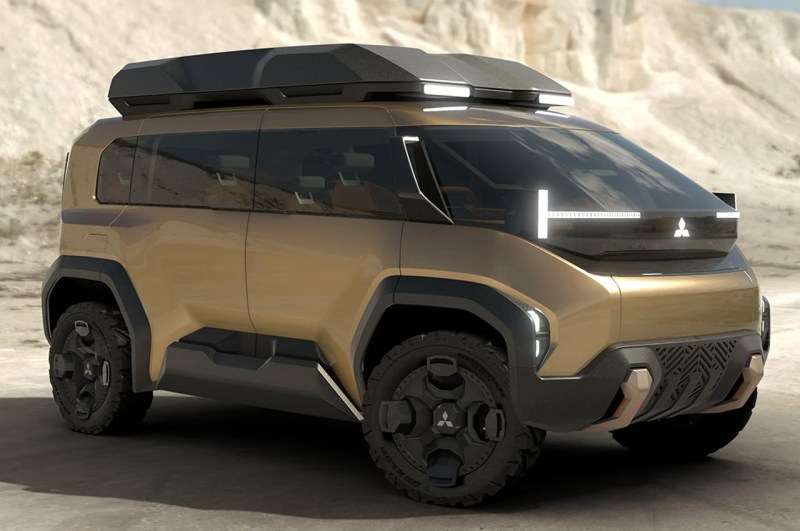
We expect electric vehicle campers and vans will spark new interest in off-grid lifestyles. The recently revealed Mitsubishi DX Concept hybrid adventure van is different enough from current models to prompt consideration of minivans as more than kid haulers. Releasing graphics of the Mitsubishi DX Concept doesn’t commit the manufacturer to anything. Still, even suggesting that such a vehicle could prowl the land in the not-too-distant future is inspirational.
The most impressive camper vans available today are based on Mercedes Sprinter vans. Mitsubishi took a different approach for the DX Concept than the typical Sprinter large-box-tricked-out-nicely design style guide. Mitsubishi doesn’t reveal the DX Concepts dimensions — or any other specifics — but it’s obvious the DX sticks to a more-from-less scheme.
Mitsubishi didn’t propose the D Concept as an extended-term live-in camper but as an adventure van to transport up to six adventurers and their gear to trailheads or other starting points. Mitsubishi’s current model lineup in the U.S. doesn’t include a minivan, but in Japan, the manufacturer offers two all-wheel-drive minivan models, the Mitsubishi Delica D:5 and the Delica Mini. The DX appears to be a more rugged version of the Delica D:5 with much more aggressive styling.
You’ll notice that none of the released images of the Mitsubishi concept van show the vehicle on a conventional street or highway. The closest we get to seeing the DX concept on an established road is a scene that could been photographed or drawn on a moderately traveled unpaved portion of the Mojave Dessert. If you drive 75 miles west from the Las Vegas Strip and take almost any right turn, you’ll find yourself in similar-looking settings.
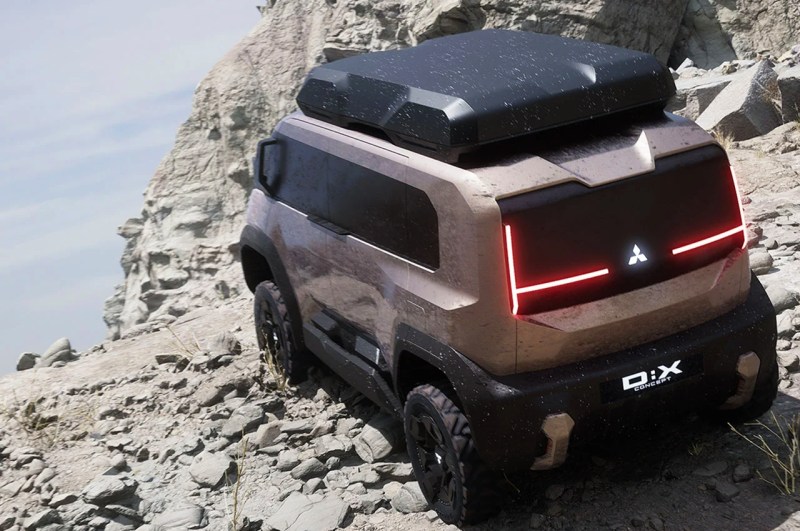
Car makers can show off concept vehicles to measure feedback without making commitments for future production. The best example of a recent concept vehicle selling essentially unchanged is the VW I.D. Buzz. Overwhelmingly positive reactions when Volkswagen revealed the modern VW Microbus concept at the 2017 Detroit Motor Show convinced the company to push the plan forward. U.S. buyers who can finally order the 2025 I.D. Buzz in 2024 will configure a vehicle nearly identical to the 2017 concept.
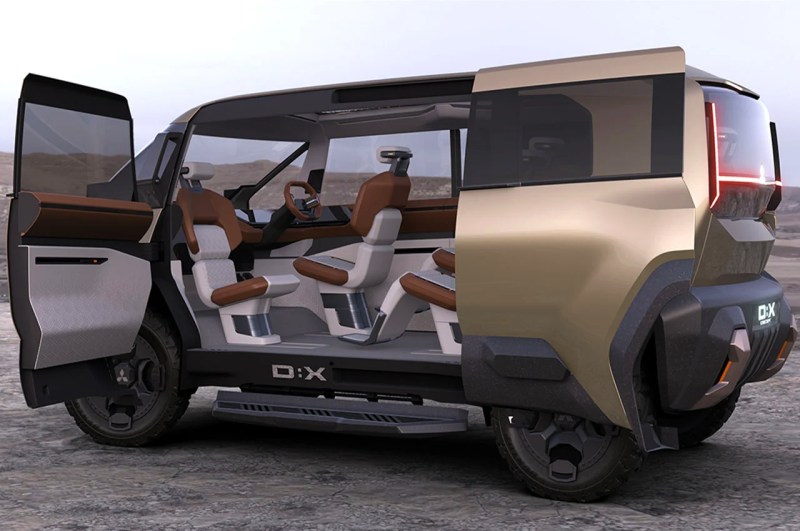
The DX Concept has a sparsely accoutered interior with three rows of paired bucket seats. The seats have audio speakers, so even when they swivel toward or away from others, the seated passenger takes their sound with them. The second and third-row seats have lower leg sections and footrests, which suggests reclining and possibly sleeping while traveling.
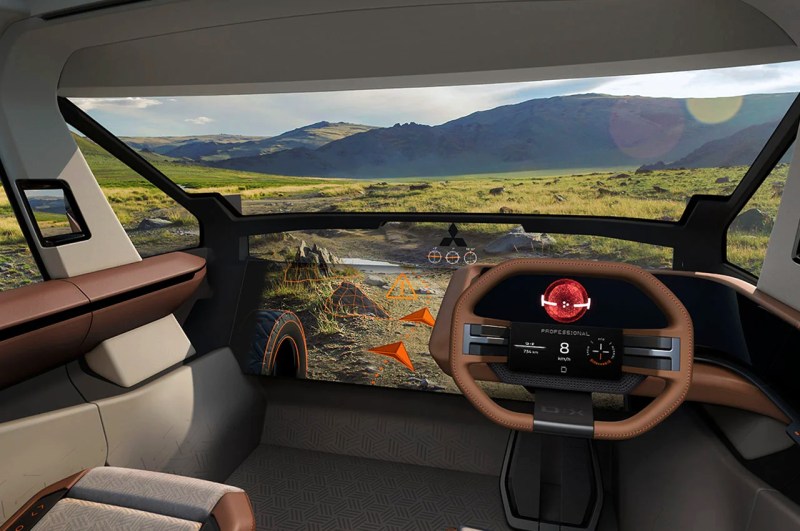
The right side DX Concept cockpit has only a few information indicators, but they’re large and clear. A large red lens located in the top center of a vast octagonal steering wheel gives the impression the DX’s brain is paying more attention to the passenger than to the road ahead. The lower half of the front of the van concept appears transparent from the inside but seems to be the work of cameras mounted on the front.

The floor in the DX Concept is pretty high, as evidenced by large running board steps on each side of the vehicle. There’s not much extra room for storage inside the van with six seats installed, but many DX Concept images show a large external roof-mounted storage container. Also, with only two or four seats installed, there could be quite a bit of extra room inside the vehicle.
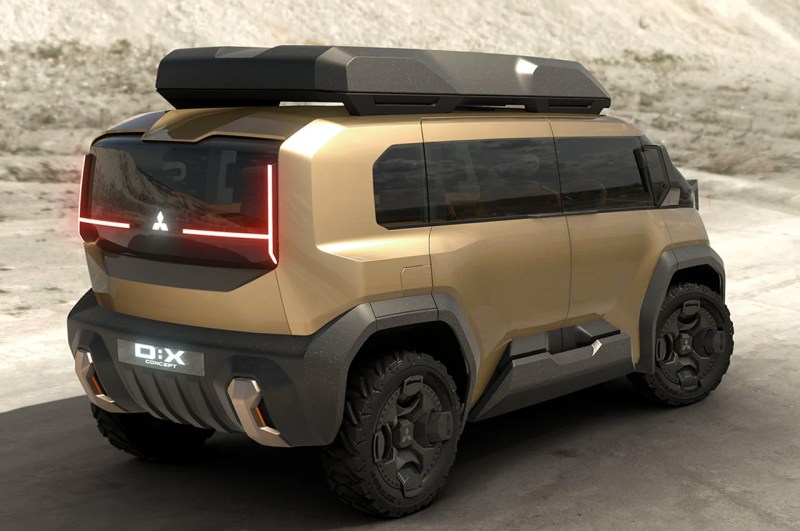
Overall, the DX Concept’s style is attractively rugged, with aggressive tread tires on large wheels. Mitsubishi’s image portfolio includes a graphic of the DX Concept navigating deep snow off-road. Suppose Mitsubishi develops the DX further, especially if the company plans to sell it in the U.S. In that case, the concept’s style and vibe align with current market styling trends. It would be even more exciting if Mitsubishi offered the DX Concept as an all-electric vehicle.



